Inside: Here are ideas about why music for kids is a learning tool they can use throughout their school years and something that will help them with reading, math and more. These ideas work and are backed by research. Try them today with your kids!
Music for Kids
Music for kids is a magic tool for learning. Do you know why?
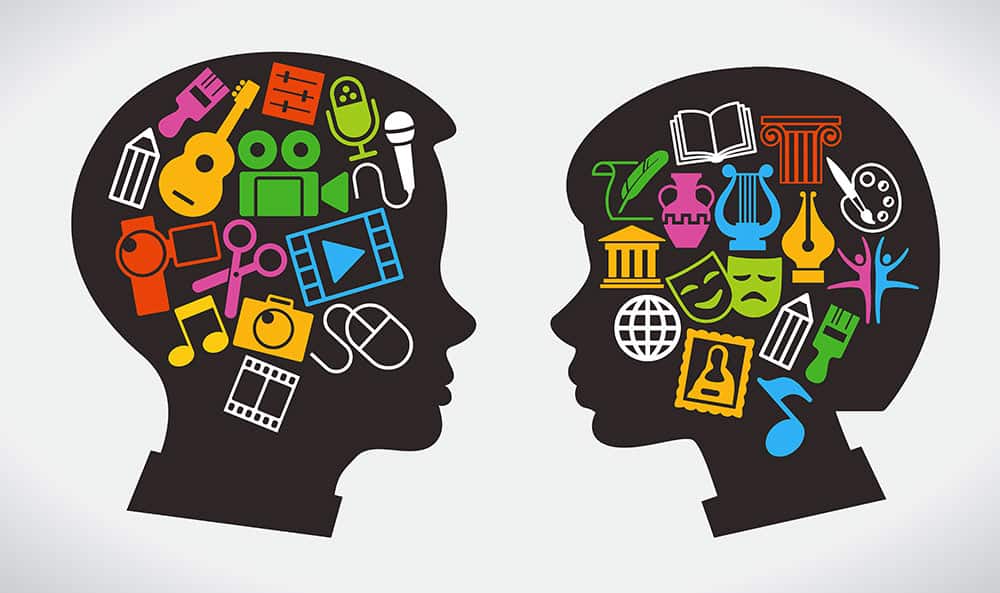
Music is special in that it strengthens the entire brain. Children involved with music do better in school
It has the ability to make the learning process easier. Music in all its’ forms—singing, learning a musical instrument, listening to music, etc., require full brainpower. The ENTIRE brain is exercised at once. When children are involved with music, their abilities for reading, writing, math, and other subjects are easier to grasp because music helps with:
- memorization
- attention
- focusing
- understanding the material
- critical thinking skills and more
Music for Kids: Ages 5-12
In previous blogs, I’ve talked about how music helps: babies in utero, the newborn to age 2, and preschoolers through age 5. Now, let’s talk about how music helps a child learn between the ages of 5 and 12.
Between the ages of 5 and 12, your child will
- learn to read
- understand what they read (reading comprehension)
- develop aural skills (listening skills)
- learn to concentrate, focus and memorize information in school.
In a nutshell, learning becomes more sophisticated. And music can help with the more difficult challenges of this process. Here’s why…
Music for Kids: Music Exercises Important Brain Functions
There are 3 specific areas of the brain that music exercises and correlates to learning:
- Auditory (hearing)
- Visual (seeing)
- Motor (movement)
These areas help with reading, reading comprehension, math and being able to focus, concentrate, listen and memorize information. Here’s how it works:

Music helps a child learn to read because it strengthens the auditory, visual and motor areas of the brain
Learning to Read: How Music Helps
Children entering kindergarten, start the momentous task of learning to read. Exposure to music can help with this task and make it significantly easier.
As parents read rhyming books and sing songs to their children, aural or listening skills are developed which helps a child hear the sounds and nuances of words.
As children memorize the lilting tunes of Mother Goose rhymes, use rhythm instruments, and play musical games and fingerplays, they are learning about the patterns that formulate the sounds, rhythm, and blending of syllables that make up words. At the same time, they are exercising the auditory, visual and motor areas of their brains.
This is a one-skill learning pattern necessary for beginning readers.
Music for Kids: Rhyming Words, Poetry & Reading
Continuing reading Mother Goose rhymes and poems, and singing songs to your children throughout the elementary years. Songs, rhymes, and poetry with strong rhythms exercise the auditory cortex of the brain which in turn, helps with reading.
Some suggestions include:
- The Alphabet Operetta by Mindy Manley Little (CD)
- The New Kid on the Block by Jack Prelutsky (poetry book)
- The Neighborhood Sing-Along by Nina Crews (songbook)
The Alphabet Operetta, uses tongue-twisting, rhyming words, and alliteration (the repetition of usually initial consonant sounds in two or more neighboring words or syllables). There are jingles and songs for each letter of the alphabet to help your child hear, process and memorize the sounds of letters, syllables, and words.
Play it in the car, at home, and at bedtime and encourage your kids to sing along.
The Music of Poetry
Reading and singing poetry with a clear musical rhyme is helpful to children’s language and reading skills. Being able to hear the combination of sounds, syllables, and rhyme is essential to the reading process.
Have you ever read the poetry of Jack Prelutsky to your children? It’s packed with humor and has wonderful rhyming words and phrases. Try “singing” his poetry with your children. They will quickly memorize 20 or 30 lines as music, rhyme, and language come together.
During elementary school, encourage your child to memorize poems and songs that have a well-defined rhyme such as the songs and poems found in the books mentioned above.
This exercise will aid in the development of skills necessary for language, reading, vocabulary and memorization skills
Aural Skills & Auditory Cortex
When a child first learns to read, he first uses his ears—an auditory cortex function—to decipher how to say the word. Many parents get it backward—they think their child first uses their eyes to read.
Think about this: if English is your primary language and I held up the word “apple” in Japanese, you could look at it with your eyes all day long, but you would still not know how to pronounce it until I said the word to you. You would be using your ears first to understand how to say the word.
This process is used when a child first learns to read—ears first, eyes second.
Since music strengthens the auditory cortex, it should logically reinforce the reading process, and research indicates it does.
In 2000, a meta-analysis of a set of 24 correlated studies, some involving over 500,000 high school students, found a reliable association between music instruction and strong reading scores.
Bottom line: when music in the form of rhyming sing-songs, or the use of rhythm instruments are incorporated when helping a child read—success happens!

When children first learn to read, they use their ears first–to hear the sounds the letters and syllables make
Motor Cortex: Movement & Fingerplays
Dr. Hannaford (author of Smart Moves) believes the most natural way for children to learn is through “image, emotion, and spontaneous movement.” Movement is essential to learning and many songs and poems for children use hand movements or fingerplays which exercise the motor areas of the brain and in turn build stronger readers.
Music for Kids: Starting Music Lessons
Usually, in the elementary years, children begin private music lessons. Learning a musical instrument is an invaluable brain-building experience for kids and will be discussed in detail on another blog (see my blog on developing talent)
When children learn a musical instrument, most of their senses are being utilized which exercises the brain for easier learning.
A child learning the piano uses his:
- Eyes to read the musical notes (visual cortex)
- Ears to hear the correct notes (auditory cortex)
- Hands to play the notes (motor cortex)
- Feet to coordinate and play the pedals (motor cortex).
This requires a level of
- symbol recognition
- listening & concentration
- memory skills
- motor coordination
All areas of the brain are working to accomplish this—especially the auditory, visual and motor areas which helps with reading, reading comprehension and math.
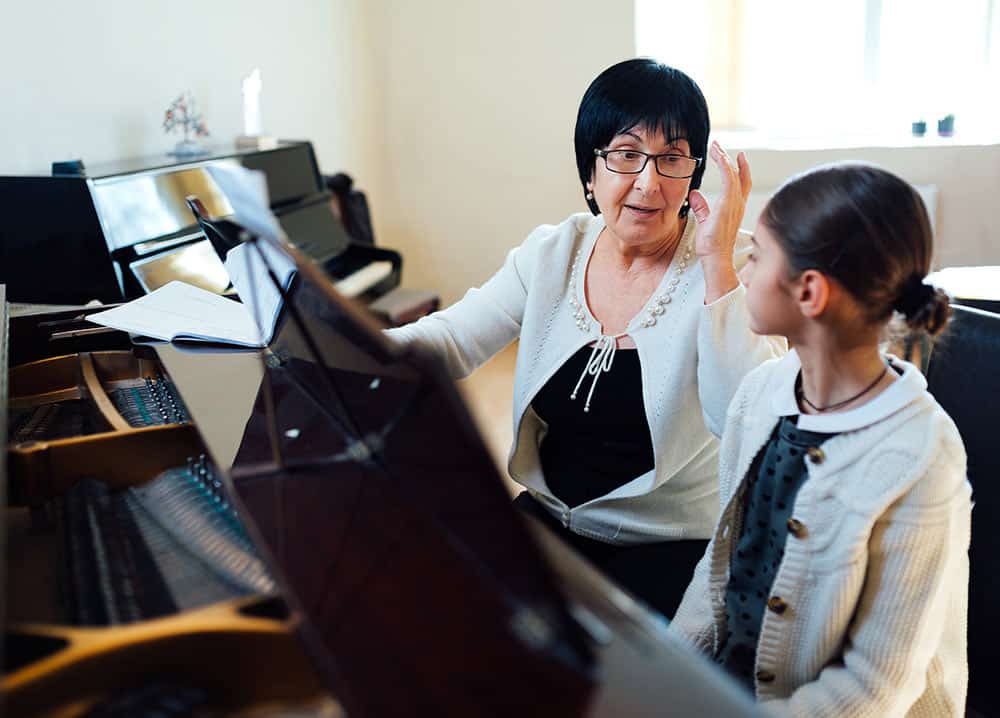
Learning a musical instrument is an all-encompassing experience for a child. They exercise the auditory, visual and motor cortices of the brain at once that also helps with learning in school
6 Musical Experiences for Your Elementary Age Child (Age 5-12)
Here are 6 music activities and ideas to do with your elementary age child to enhance auditory, visual and motor cortex functioning, memorization and learning:
#1: PRESS FORWARD
Continue with all the musical ideas previously suggested in other blogs, making them age-appropriate
#2: SING YOUR POETRY
To help your child with her reading skills in the early elementary years, continue to sing and memorize songs and poetry with a strong rhythm and rhyme. These activities strengthen the auditory cortex needed when a child learns to read. Check out:
#3: MUSICAL GAMES FOR MEMORY & LEARNING
Play music games with your child involving math, spelling, and reading. For example:
- Young children learn their ABC’s faster when singing the ABC song.
- To help your child learn math facts, sing the facts to a rhythm.
- Is your 5th grader learning all 50 states? Teach her the song, “Fifty Nifty United States” She’ll be able to rattle off the 50 states in no time!
#4: NAME THAT TUNE
This music game builds the auditory cortex. While driving in the car, play musical guessing games. Call it, “Name That Tune,” (after the popular TV show). Use either the classical music station on the radio or a classical CD that you can play in the car. You can use your child’s favorite CD,–but listening to classical music will develop their aural or listening skills to a higher level.

Play different music games with your children–Name that Tune, learning to recognize the sounds of musical instruments and more–all of these games help a child with reading skills.
The goal is to identify:
- The piece of music
- The composer
- Period the music was written: baroque, classical, romantic, or twentieth century.
These Disney music CDs are recorded in the style of the great composers and will help your child identify musical periods and the composers of those periods:
This game helps a child:
- Broaden their understanding of the background of music and musicians
- Develop keen aural (listening) skills as they listen to various music periods requiring more sophisticated and careful listening.
- Strengthen the auditory cortex
- Enhance focusing and concentration skills
#5: RECOGNIZE THE SOUNDS OF MUSICAL INSTRUMENTS
Another music game to develop aural skills is playing guessing games that require recognizing the sounds of different musical instruments. Once your child knows each instrument by their individual sound, have him/her categorize them into their correct “family” such as strings, woodwinds, percussion, brass, etc.
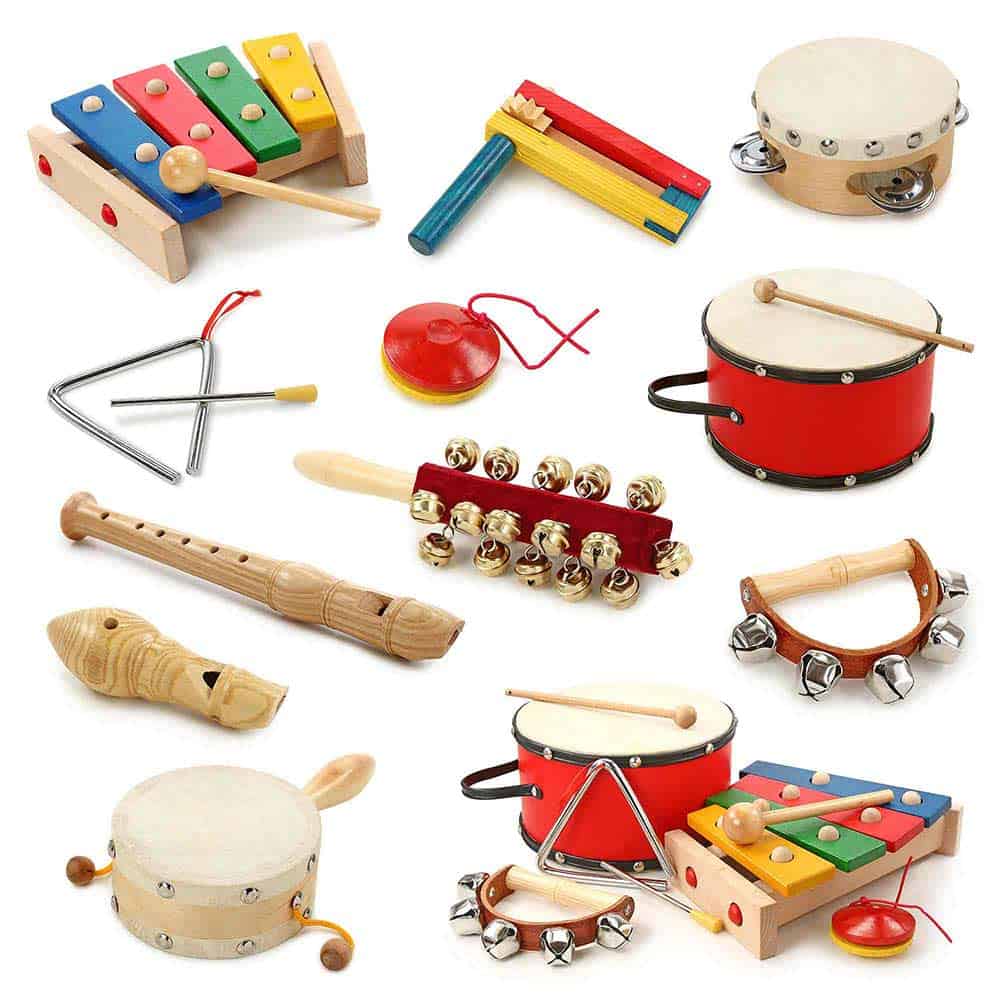
Learning to recognize the sounds of musical instruments will help a child to read because they are strengthening the auditory cortex–needed in the reading process.
Listen to: The Young Person’s Guide to the Orchestra to become familiar with each instrument’s distinct sound.
This is a fun game to play in the car. And it’s not easy. Again, it will exercise your child’s brain and improve his/her listening and concentration skills.
#6: MORE GAMES
Play the game, “Twenty Questions”—a game that’s been played since the 19th century. One person thinks of a word related to music and everyone asks questions until they guess it. Possible categories include musicians, composers or instruments of the orchestra. This requires auditory and motor cortex functioning
Here are some of my Amazon picks for CDs and Jack Prelutsky’s book:
What music experiences have you had with your children or grandchildren in the elementary school years? Please comment in the section below.

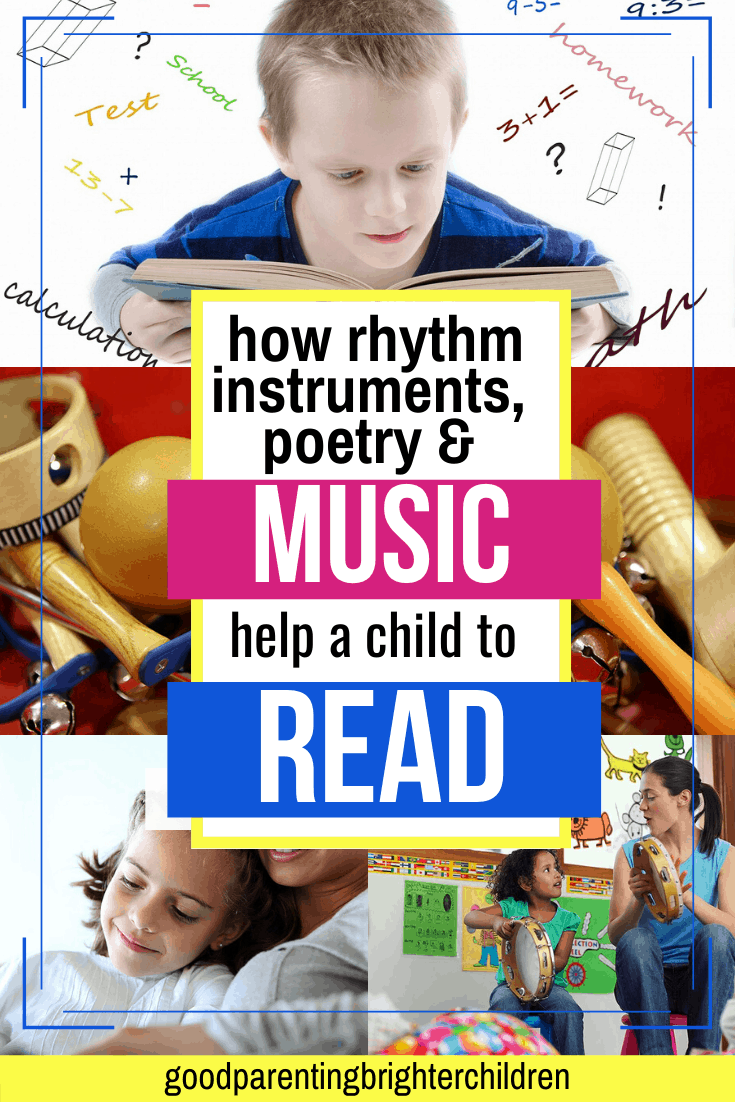
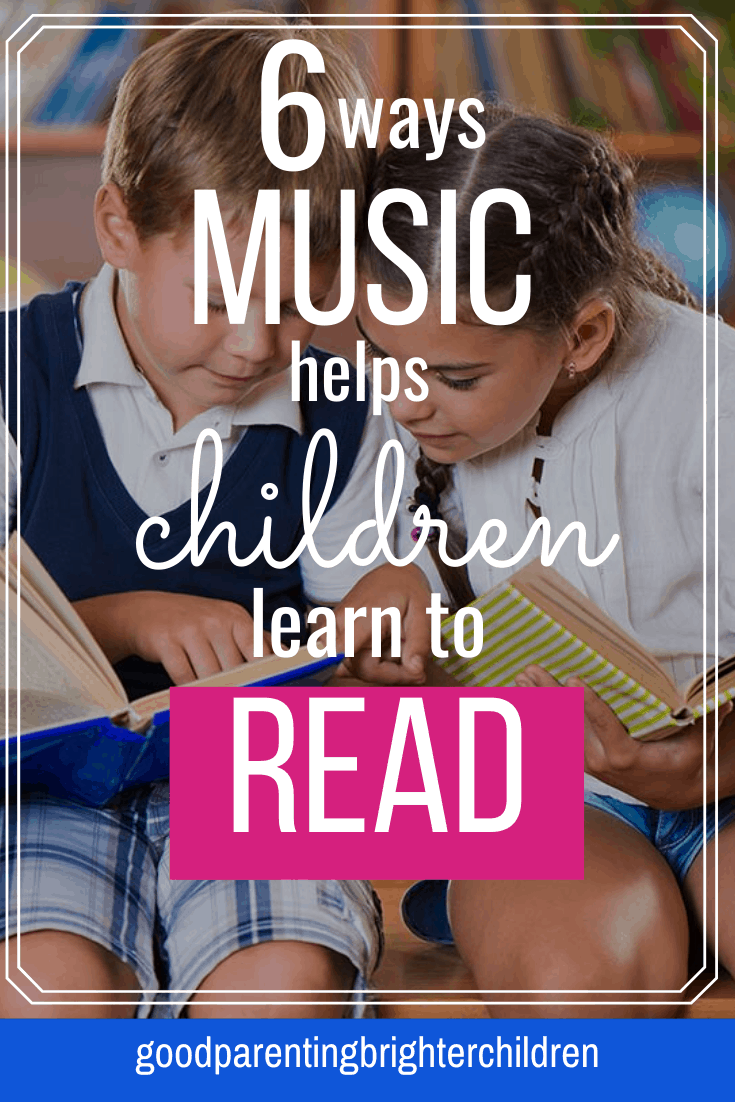
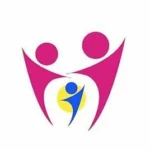

Leave a Reply